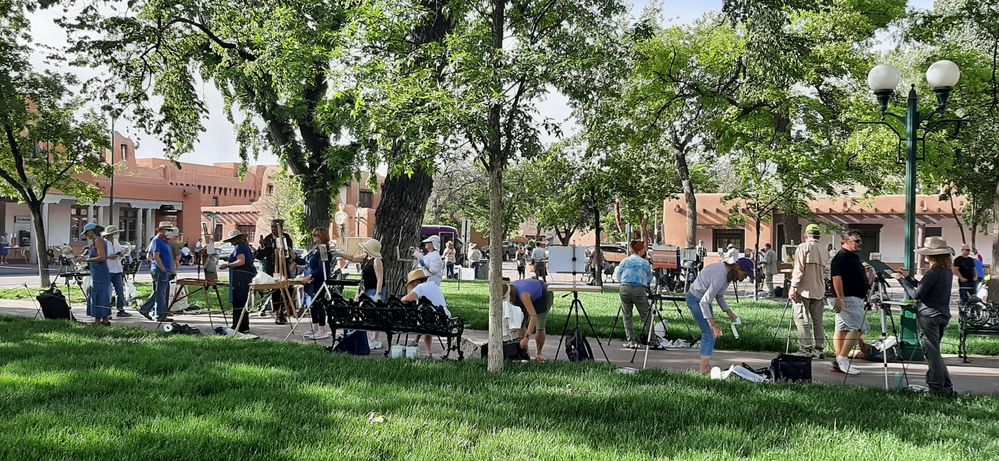
For our second paint-out of the Plein Air Convention & Expo, we took several buses to the historic and vibrant Santa Fe Plaza. There, artists set up their easels throughout the square and beyond onto side streets. Street musicians, shoppers, and diners on balconies helped add to the atmosphere while everyone painted their chosen scenes.
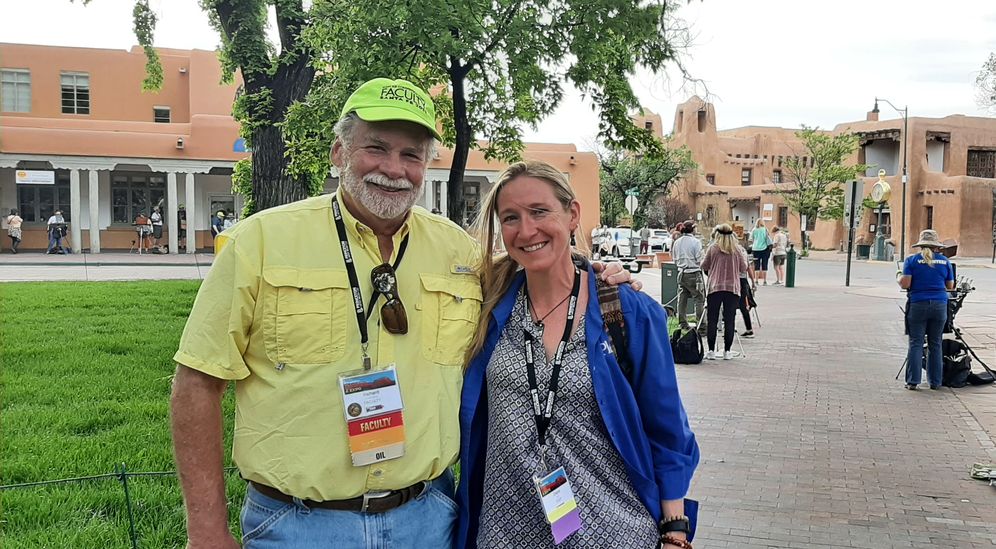
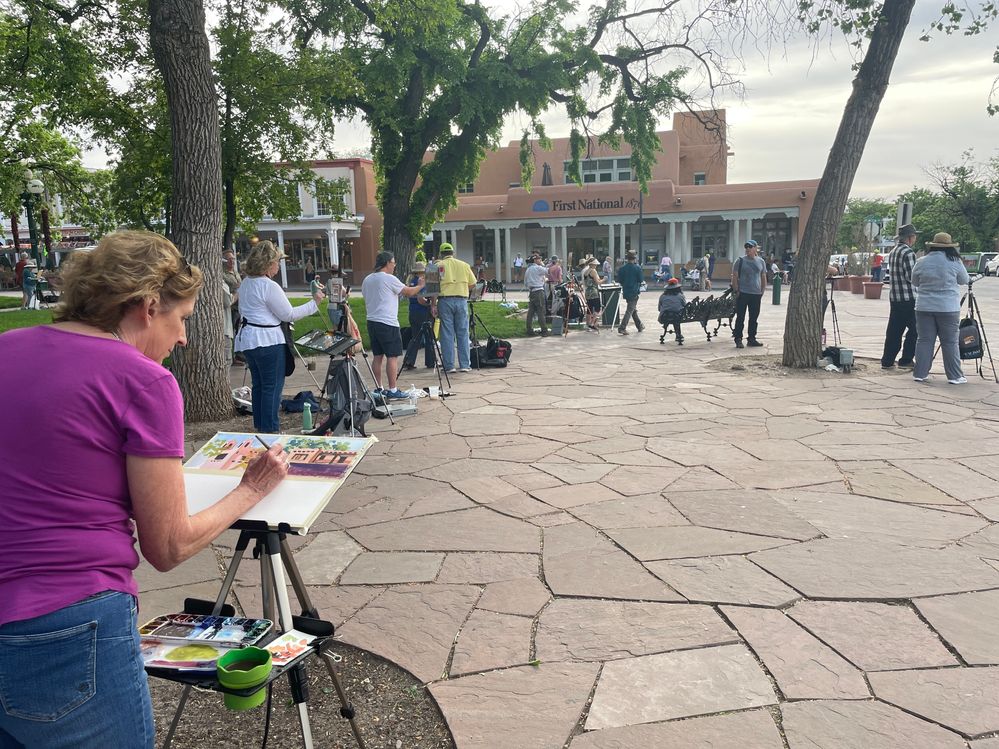
At the resort itself, the most ambitious of us had started the morning once again with Eric’s Art Marketing Bootcamp. In this session, he explained how to understand who your target audience is so that you can connect them to your art. He reminded us of the importance of repetition when it comes to advertising, and reassured us that “branding is a cumulative process.”
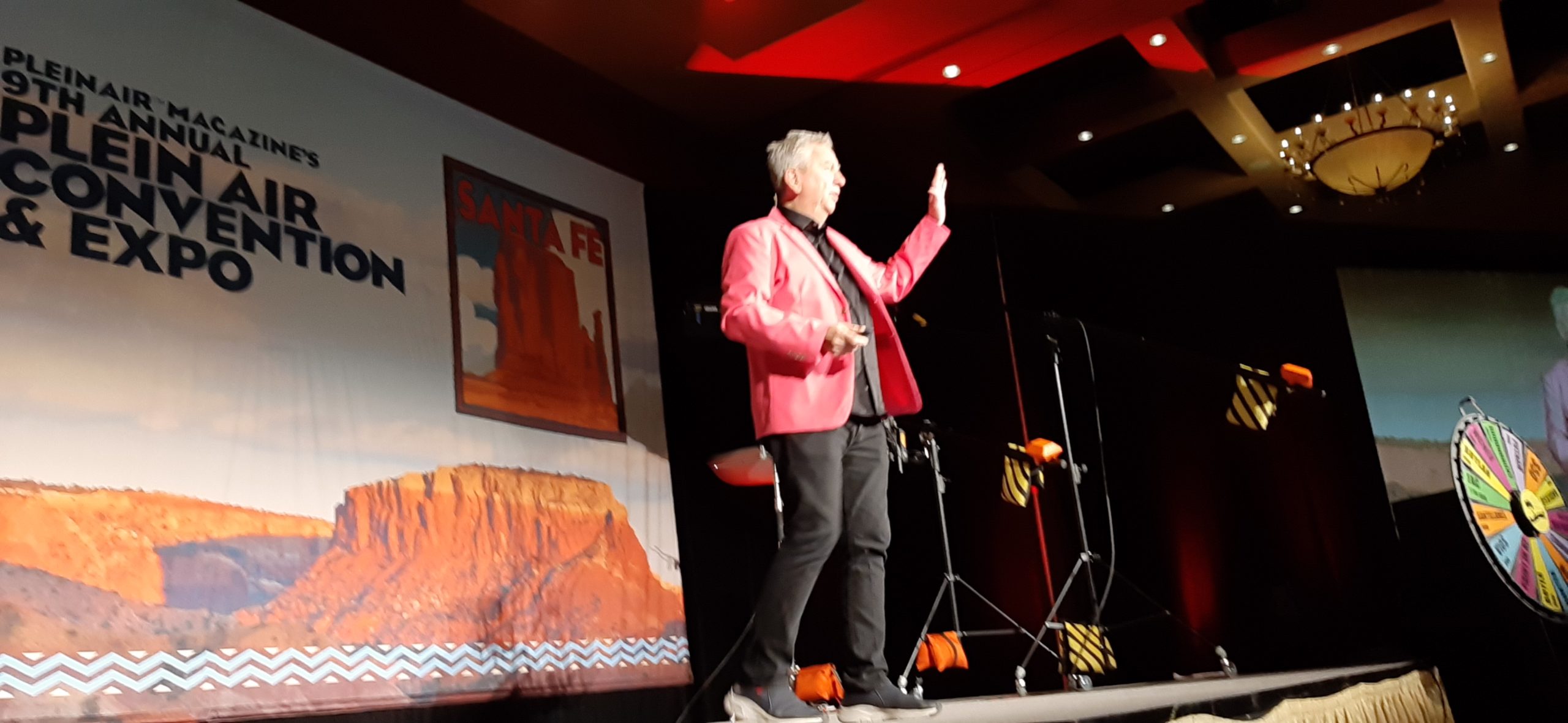
This was followed by a solvent-free demo by Thomas Jefferson Kitts. His presentation showed how to greatly reduce or eliminate your use of solvents so your paintings will shine with a deeper, more vibrant color.
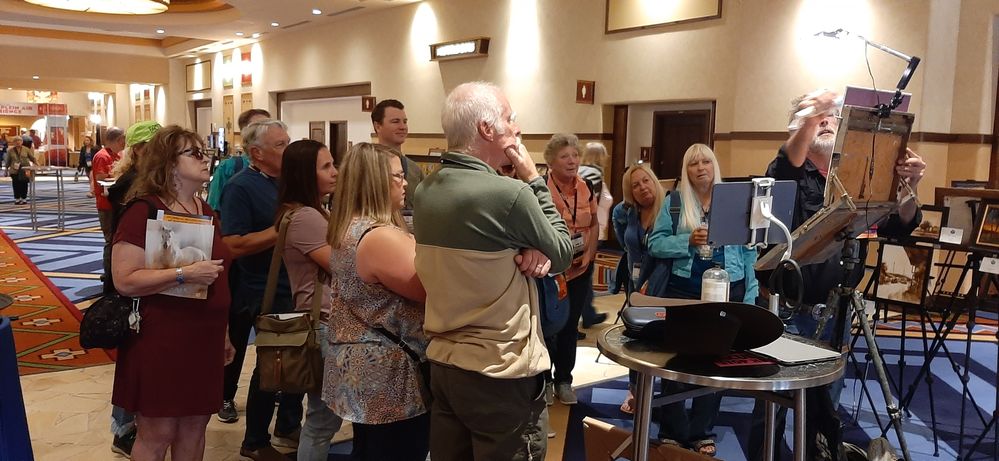
Jean Stern’s “Historic Women of Plein Air” covered some of the difficulties women faced to become artists prior to the late 1800s; he followed up with a review of some of the important women plein air painters active between 1880 and 1940. We looked at various regions of the U.S. and discussed artists who were essentially unknown before the 1960s who are now recognized for their artistic importance.
Haidee-Jo Summers makes a strong and simple design statement from a busy subject, delivering a clear message with economy of strokes. Her motto is, “Say what you need to say in the painting, then get out. There is no use chattering on after you have made your point.”
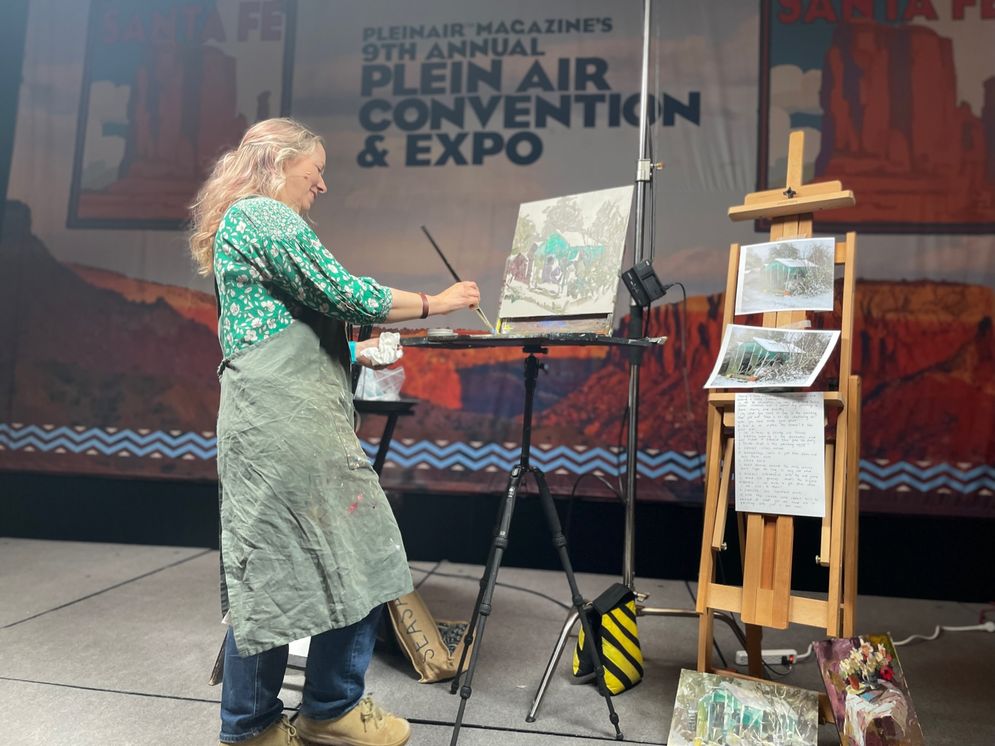
In “The Big Finish,” Dawn Whitelaw demonstrated on the main stage with suggestions for finishing your work. The audience responded with knowing laughter when she said she could tell how far a painter was in their work by the way they were standing in front of the canvas. 🙂
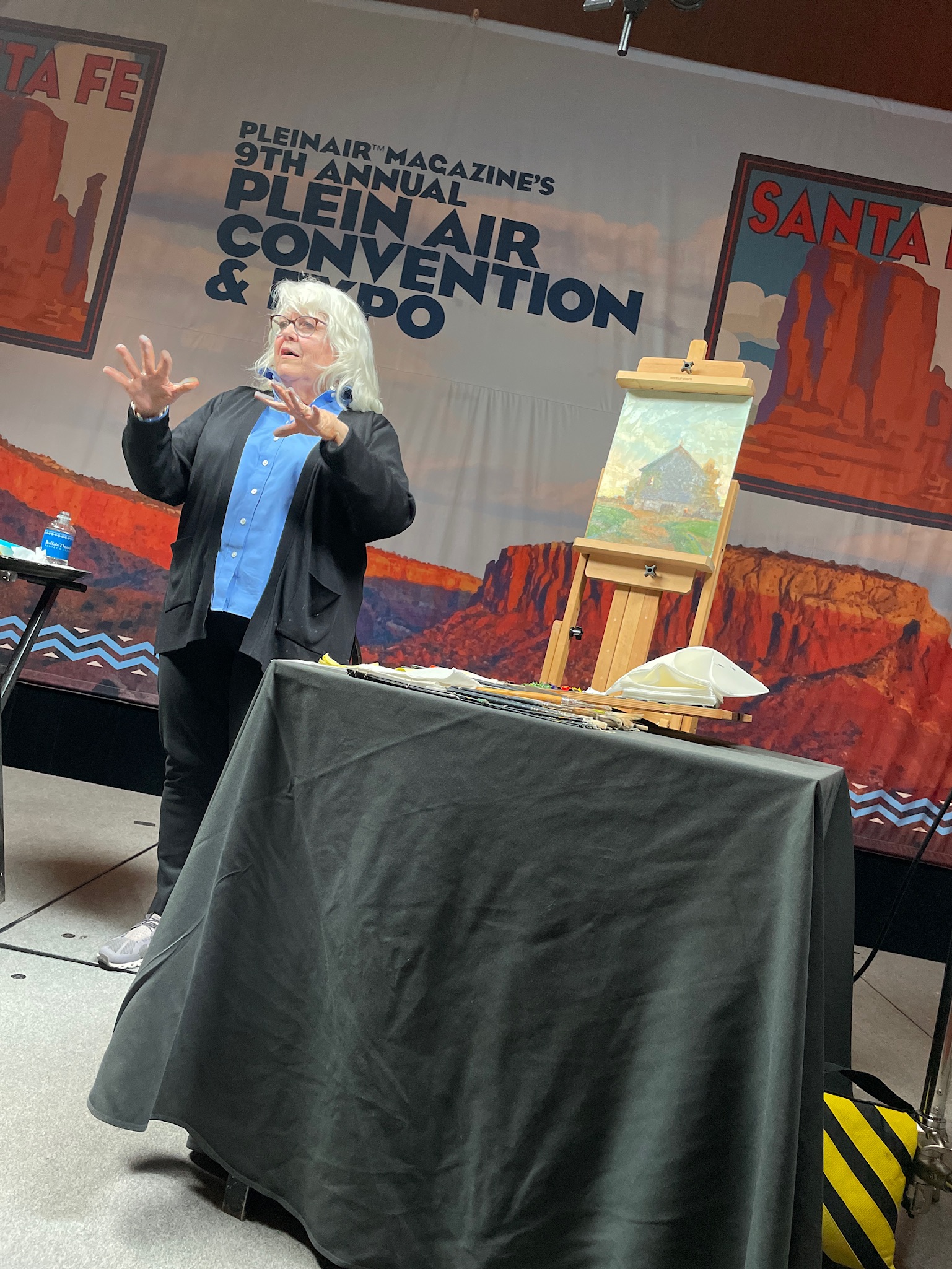
More Favorite Moments:
Suzie Baker extolled the virtues of painting an outdoor still life, explaining how painting them can take off some of the pressure and inform your landscape approach too.
Expedition artist Sharon Bamber revealed how to really listen and respond to the language of the land, letting it guide your technical and emotional choices.
Brenda Swenson‘s favorite tool is a sketchbook she makes with an assortment of traditional watercolor papers and untraditional toned papers. At the Water Media Stage, she shared her techniques for creating memorable sketches that capture the essence of a place.
In “Animal Paintings: Knowing When to Stop Begins at the Start,” Johanne Mangi demonstrated different ways to start a painting and explained how to have an individual roadmap.
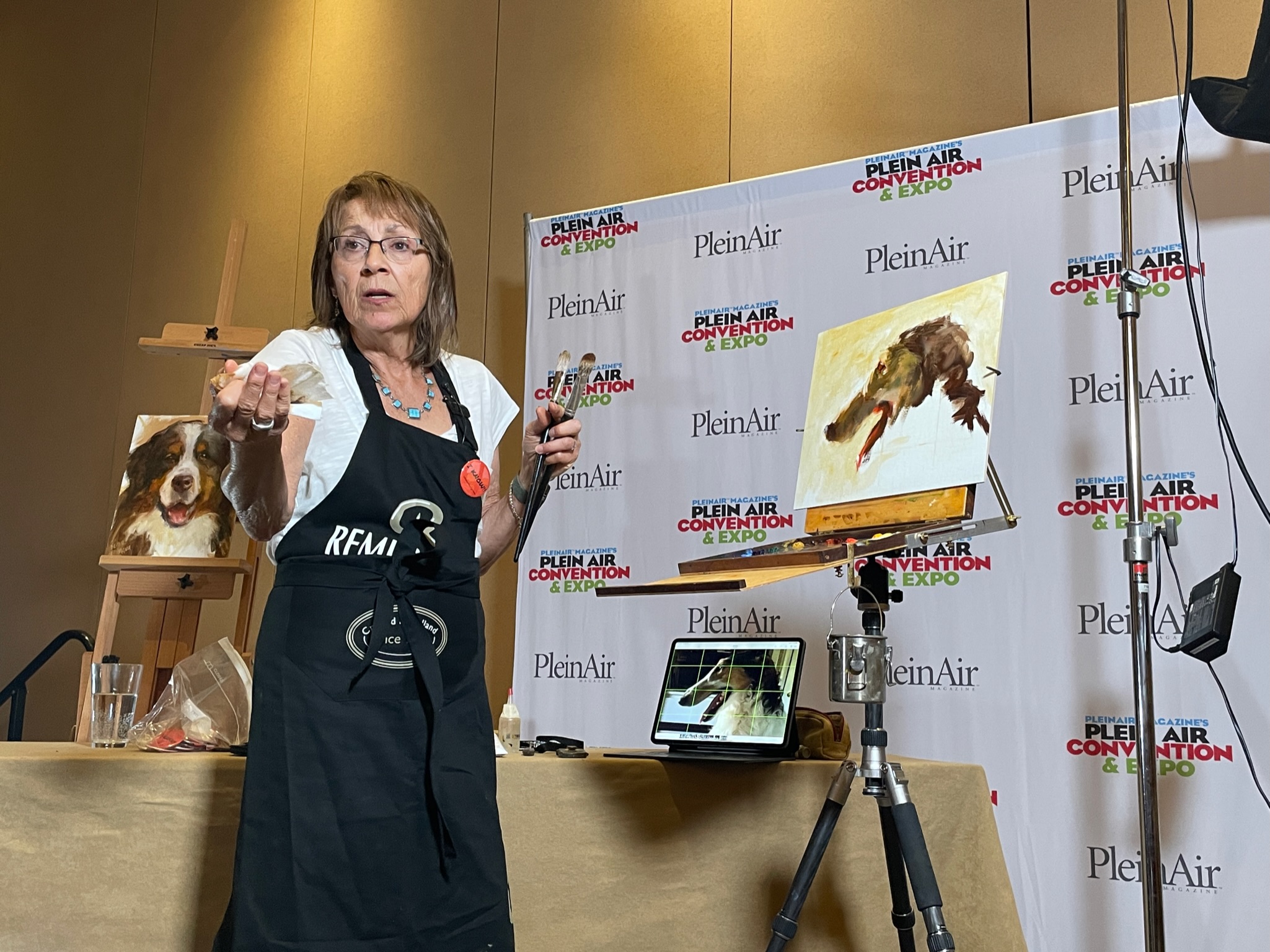
Master pastel artist Tom Christopher demonstrated his techniques for pastel painting on a textured surface, while also discussing the importance of contrast and light as well as values and color temperature.
Zeroing in on a compelling scene and finding a desirable composition to paint can be a daunting and frustrating experience. Tim Oliver emphasized his sketchbook and his “Circular Creative Process.”
On the Demo stage, Debra Huse shared her five key steps to your painting success in “Lay It Down & Leave It Alone).”
During a step-by-step landscape demo using water-mixable oils, Lori McNee shared her secret tips, techniques, and tools for getting the most out of solvent-free painting.
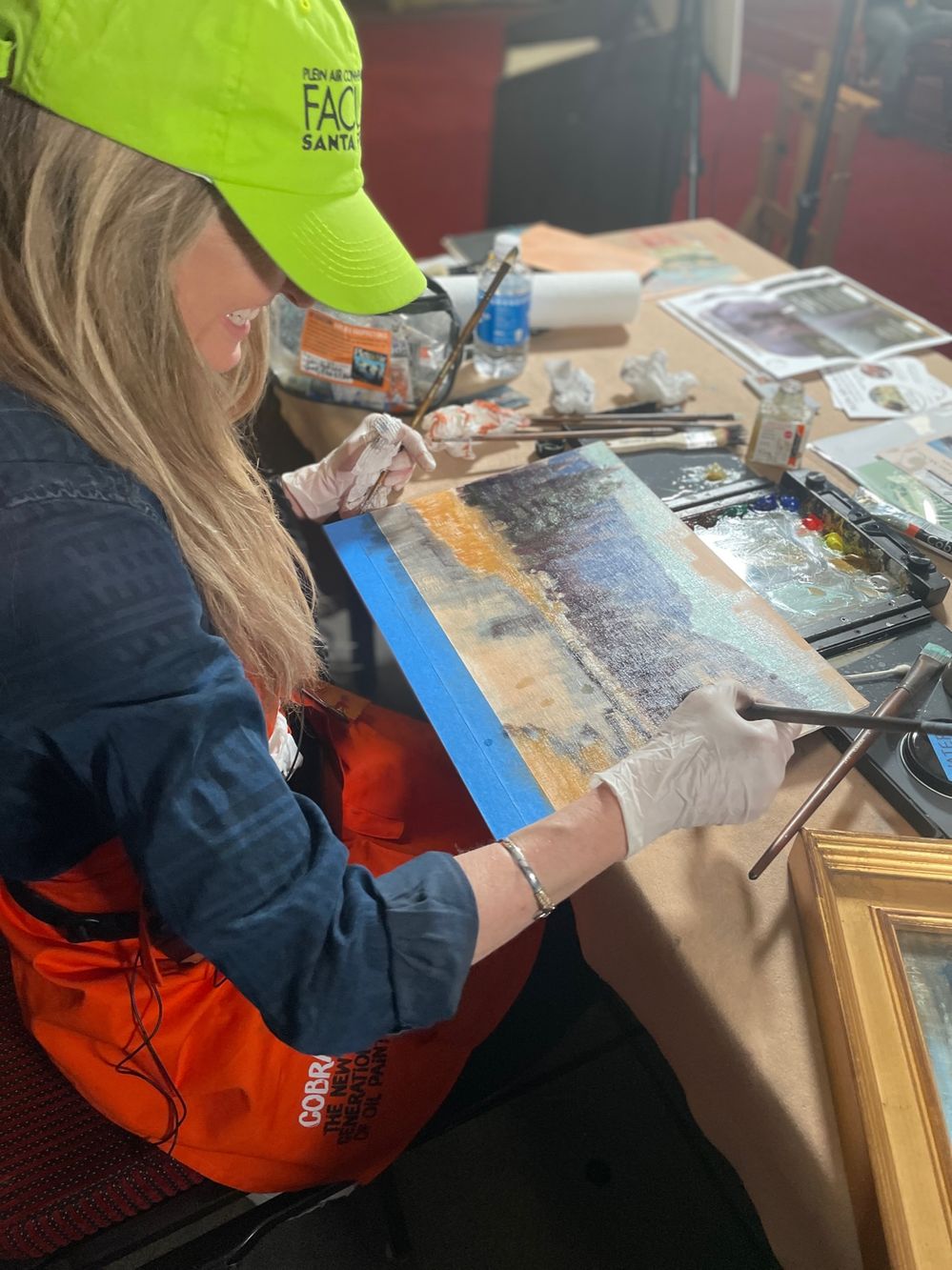
How do you take your concept and create a good painting in the field? On the Demo stage, Jim Wodark talked about all the tools you can use to communicate what you want to say.
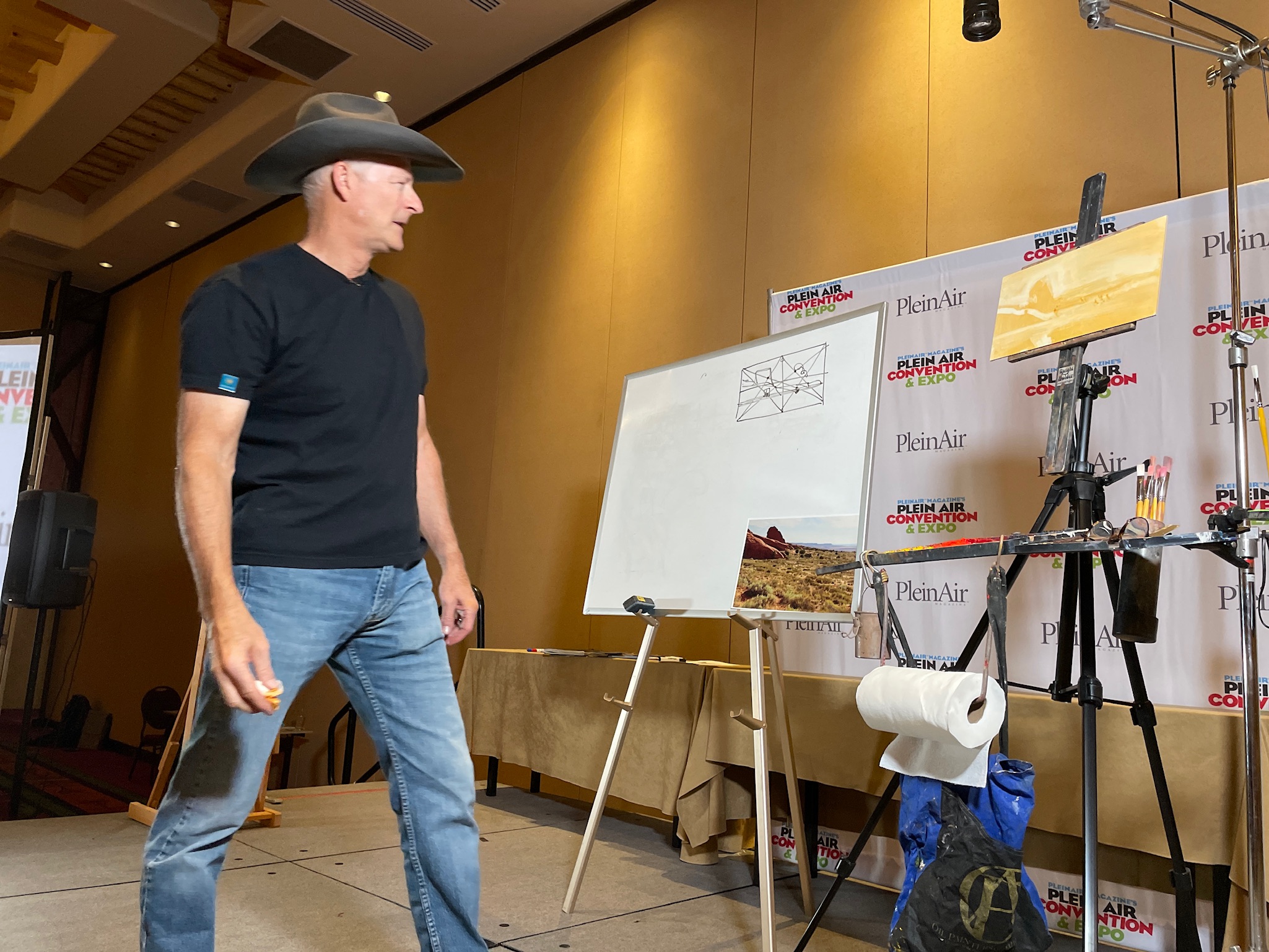
According to Natasha Isenhour, all paintings begin as a positive “heart” response to a scene and learning to paint the emotional response is key to an effective painting. Natasha demonstrated a landscape in pastel, addressing the importance of value, composition, and temperature as tools to convey a personal response on paper.
Paintings are built through composition and value, and color is considered down the scale in importance for a painting. But that doesn’t mean we have to fear using color if we love it. Ober-Rae Starr Livingstone explained more in his “Painting Skies with Dynamic Color in Acrylic” session.
Lyn Boyer shared her love for the beauty of automobiles and other vehicles, as well as a tool kit of skills on how to integrate vehicles into a scene, get the drawing right, and paint surfaces from chrome to rust.
Mike Hernandez gave us a Digital Demo on how to practice, experiment, and accelerate learning by using a computer to allow for trial and error when it comes to composition and more.
We wish you were here!

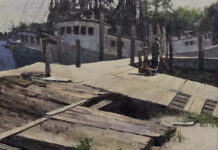


What a memorable experience for these artists!